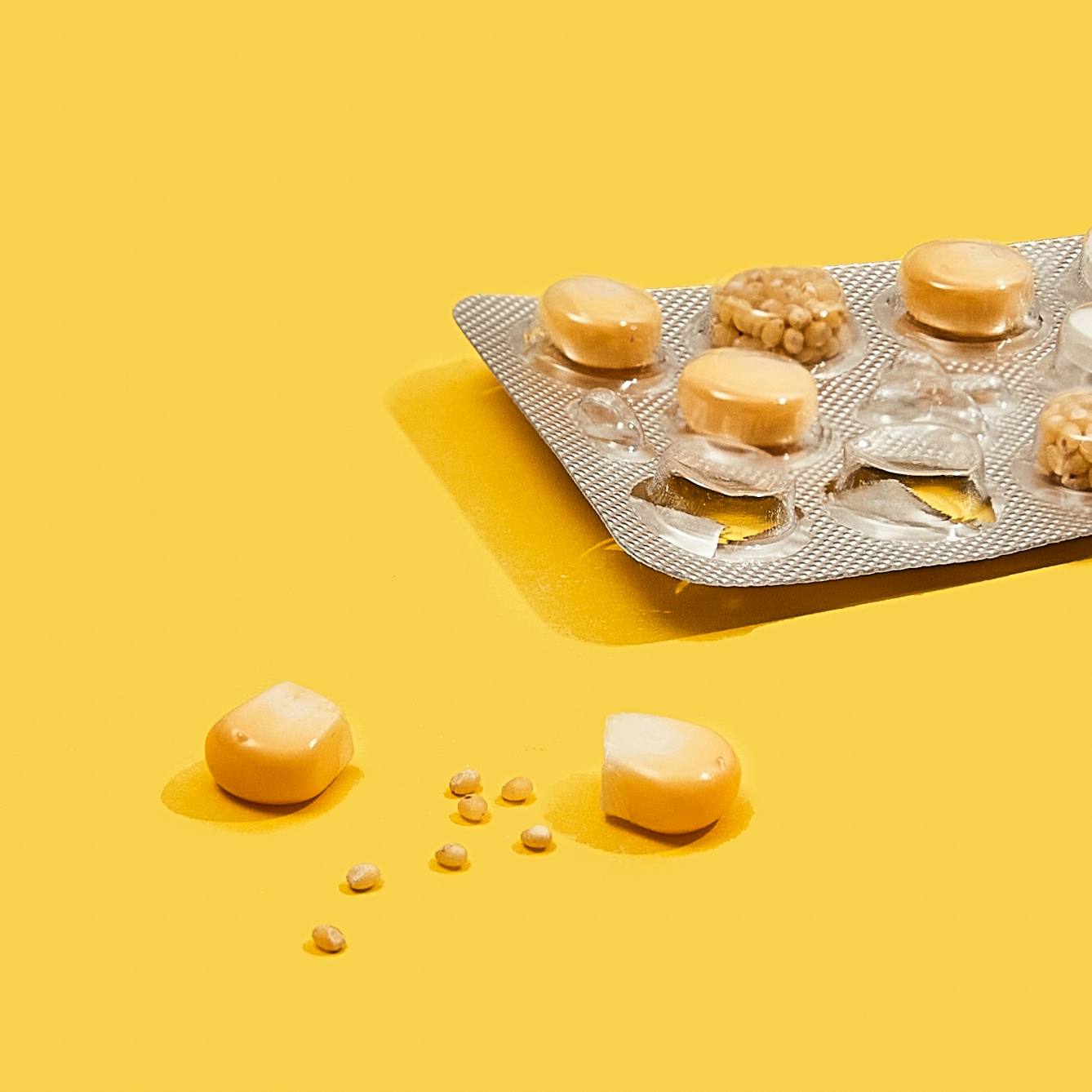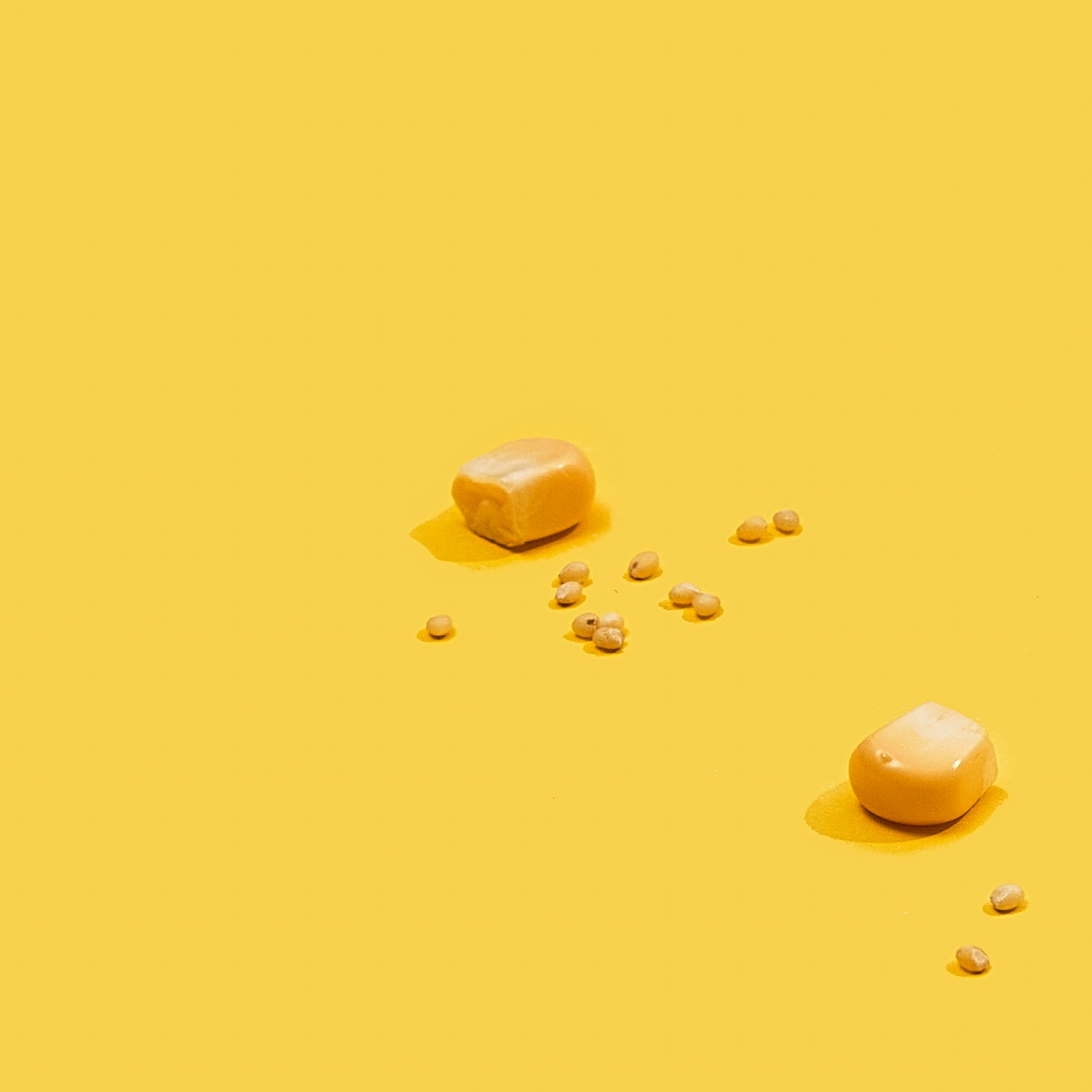Thomas Sankara’s four-year revolutionary rule in Burkina Faso in the 1980s set up ambitious policies and systems to make the country self-sufficient in food. His hopes for the country’s health, too, were manifest in his initiatives to vaccinate children and make clean water available to all. Perry Blankson outlines Sankara’s inspirational drive to free the country from dependence on the West.
Thomas Sankara and the stomachs that made themselves heard
Words by Perry Blanksonartwork by Anna Keville Joyceaverage reading time 8 minutes
- Article

On 4 August 1983, the French colony of Upper Volta became Burkina Faso amid a coup d’état led by the Marxist-Leninist, Pan-African revolutionary Thomas Sankara. A global recession in the 1970s had hit Africa – economically dependent on the ‘developed’ Western world – the hardest, but this was compounded by a devastating drought and famine in the Sahel region, which led to the deaths of one million Africans across Burkina Faso, Chad, Mali, Mauritania and Niger.
It was during this period of crushing foreign debt and extreme hunger that Sankara entered the scene, promising a break, at any cost, from the conditions that had caused untold misery in his homeland.
From the day of the revolution, promoting public health through mass communication – in the form of theatre performances, songs and public health posters – was at the core of government policy. In just a few brief years before Sankara’s assassination in 1987, Burkina Faso not only vaccinated millions of children against measles, meningitis and yellow fever, and combated desertification via planting trees and its “one village, one grove” policy, it also began to take steps to secure the country’s health through food self-sufficiency – the ability to satisfy food needs from its own domestic production.
With Africa today still subject to neocolonial ‘aid’, facing food insecurity and vaccine apartheid amid the coronavirus pandemic, the legacy of Sankara and the Burkinabé Revolution provides us both with an alternative vision of how food justice and public health success can be achieved, and how revolutionary vision can be constrained by adverse material conditions.
Conquest and hunger
Prior to colonial rule, Upper Volta was home to a diverse tapestry of over 60 separate ethnic groups, the majority of whom survived through subsistence farming, relying on rainfall and manual labour to cultivate crops. Despite a low overall agricultural output, it was observed by researcher Jacques Giri in 1985 that “the [precolonial] system did generate a surplus that supported a small, but not insignificant class of non-food producers… and certain categories of craftsmen and griots [historians and storytellers] who worked part time in agriculture”.

“With Africa today still subject to neocolonial ‘aid’, the legacy of Sankara and the Burkinabé Revolution provides us with an alternative vision of how food justice and public health success can be achieved.”
This delicate balance of pre-colonial agriculture, trade and commerce was smashed by the French imperialist conquest of the Sahel in the late 19th century. Rather than subsistence farming, agricultural production in the region was forcibly shifted towards the intensive process of growing cash crops such as cotton and sugarcane for profit.
Sankara witnessed first-hand the suffering wrought by hunger in Burkina Faso. Between the 1960s and 1980s alone, famine killed approximately 100,000 people, exacerbated by a forced agricultural restructuring and grain requisitions (or ‘taxation’, whereby any excess harvest or livestock were appropriated) by colonial authorities. The memories of this provided some of the strongest motivations for revolution.
Laying out his revolutionary vision for the nation’s health and food justice, Sankara declared: “Our economic ambition is to use the strength of the people of Burkina Faso to provide, for all, two meals a day and drinking water” (speech at the UN General Assembly, 4 October 1984). For those used to regular meals, this might not seem a bold statement, but in a country where the very poorest could expect to go without food for weeks, two meals a day was a radical idea.
In order to carry out this vision, the old, colonial state had to be torn down: the National Council for the Revolution (CNR) became the governing body, tasked with targeting state corruption and achieving food sovereignty as among their highest priorities. Addressing the United Nations in 1984, Sankara said, “We must succeed in producing more – producing more, because it is natural that he who feeds you also imposes his will… We are free. He who does not feed you can demand nothing of you… Our stomachs will make themselves heard and may well take the road to the right, the road of reaction, and of peaceful coexistence with all those who oppress us by means of the grain they dump here.” Inspired by the Cuban revolution, Revolutionary Defence Committees (CDR) soon supplanted the tribal chiefs who had traditionally been local authorities.
While the CNR was important for creating state policy, it was this vast array of local CDR bodies that were responsible for implementing the revolution on the ground. Historian Brian J Peterson notes that “CDR crews got involved in public works projects… planting trees, and distributing food in the regions hit by drought”. As Sankara and the CNR implemented their ambitious policies, the CDRs went out among their communities and brought them to life.

“Where is imperialism? Look at your plates when you eat. The imported rice, maize and millet; that is imperialism.” Thomas Sankara.
Imperialism on a plate
For Sankara, the strongest demonstration of how imperialism works even within the stomachs of colonised people is in how a country with the capacity to feed itself still has to beg others for food aid. As he commented later at the First National Conference of CDRs in 1986, “Where is imperialism? Look at your plates when you eat. The imported rice, maize and millet; that is imperialism.” In his view, such aid only reinforced the idea that Africans were consigned to the status of beggars, and this mindset had to be broken through self-empowerment – the Burkinabé population would have to take it upon themselves to grow, eat and distribute their own food.
For Sankara, food and health did not simply mean the freedom to choose a specific diet, but the freedom to be completely self-sufficient. To do this, Sankara’s government undertook a form of land redistribution, encouraging rural subsistence and the growth of local rice, maize and millet.
Yet the droughts of the 1970s and 1980s greatly hampered the capacity of rural farmers to grow rice, maize and millet. To avoid widespread starvation, imported food aid (sold at a reduced price, not given as a grant) was a stopgap measure that Sankara recognised as having harmful long-term effects, due to the practice of donor nations (such as the United States, the largest food donor in the world) using food aid as a convenient method of offloading their surplus agricultural production, which heavily depressed prices for local farmers.
For Sankara, food and health did not simply mean the freedom to choose a specific diet, but the freedom to be completely self-sufficient.
During the crisis of the 1983–85 drought, the CNR accepted large shipments of Western food aid but did not lose sight of the long-term goal of achieving food sovereignty. Water was a precious resource and a key factor in this battle for better health and self-sufficiency. As Sankara declared, “We must choose between champagne for a few, or safe drinking water for all.”
The subsequent establishment of a Ministry of Water in 1984 led to the building of thousands of wells and small dams across the country to better facilitate access to clean water. One key step taken by Sankara was to begin expanding irrigation in the Sourou Valley in 1984. Sankara himself oversaw the development of the project and was personally involved in rallying local villagers to assist in the work.

“Thomas Sankara has conquered hunger. It has meant that Burkina, in four years, has become food self-sufficient.” Jean Ziegler.
A vision ahead of its time
Today the Sourou Valley is essential to the farming of rice, maize, sugar cane and potatoes, while onions and tomatoes are also grown in the region, greatly diversifying the availability of food and crops available. By 1987, production of cereals had risen to 1.6 billion tons (up from 1.1 billion tons in 1983) leading Jean Ziegler, then UN Special Rapporteur for the Right to Food, to declare: “Thomas Sankara has conquered hunger. It has meant that Burkina, in four years, has become food self-sufficient.”
Ultimately, Sankara’s revolutionary vision has been proven to have been ahead of his time. While it’s important not to individualise the achievements of the Burkinabé Revolution (something Sankara took measures to avoid), it would be difficult to speak about these breakthroughs without understanding how Sankara embodied the spirit of the revolution.
His holistic approach to public health advocacy and food justice was reflected in the very way he lived. It was not uncommon to spot an energetic Sankara cycling to work or taking part in a local football match in a bid to encourage exercise among the population. His modest diet of tô (millet) or rice was often shared with his friends, family or compatriots that he met on his travels across the country. As a treat, Sankara indulged in aloko (fried plantains) and seldom drank beer, preferring water instead.
One wonders what might have happened if the story of Sankara and the Burkinabé Revolution had not been cut brutally short by his assassination. Today Burkina Faso still remains dependent on food aid, desertification continues to displace hundreds of thousands, and the coronavirus pandemic has laid bare the deficiencies of healthcare in the region. It would be simple, therefore, to discount the revolution as a failure.
Yet in four years under Sankara, while its neighbours were being forced by International Monetary Fund structural readjustments to make cuts to healthcare and education, Burkina Faso took steps to secure the health of the entire country against the behemoth of global capitalist forces arranged against it. In a neo-colony chained to an uneven relationship with the global economy, Sankara struggled to achieve the greatest amount of autonomy and independence that he could, and in doing so illustrated that another world – a world free from debt and dependence – was possible.
About the contributors
Perry Blankson
Perry Blankson is a Tribune columnist and a project coordinator at the Young Historians Project, working to encourage the development of young historians of African and Caribbean descent. He is also a member of the Editorial Working Group for the History Matters Journal.
Anna Keville Joyce
Anna Keville Joyce, Food Artist and Creative Director, is originally from the USA and currently based out of Buenos Aires, Argentina, and New York City. With a background in food styling, design and anthropology, Anna has participated in a wide variety of photography, film, and installation projects worldwide, and has been featured in numerous publications and exhibitions. Her creative spark, attention to detail, and keen sense of composition has allowed her to gain a broad international client and she has the pleasure of collaborating on increasingly creative and dynamic projects.

